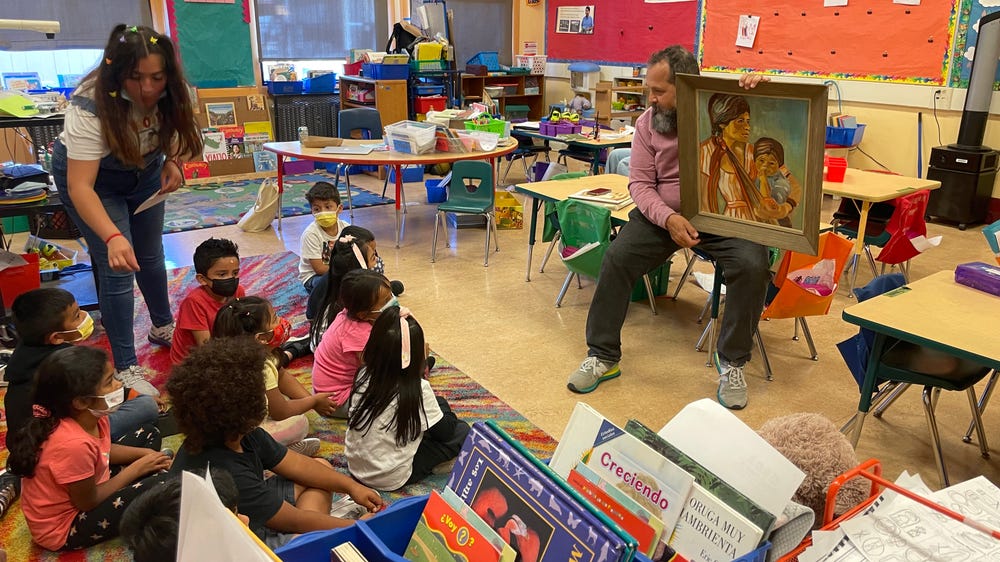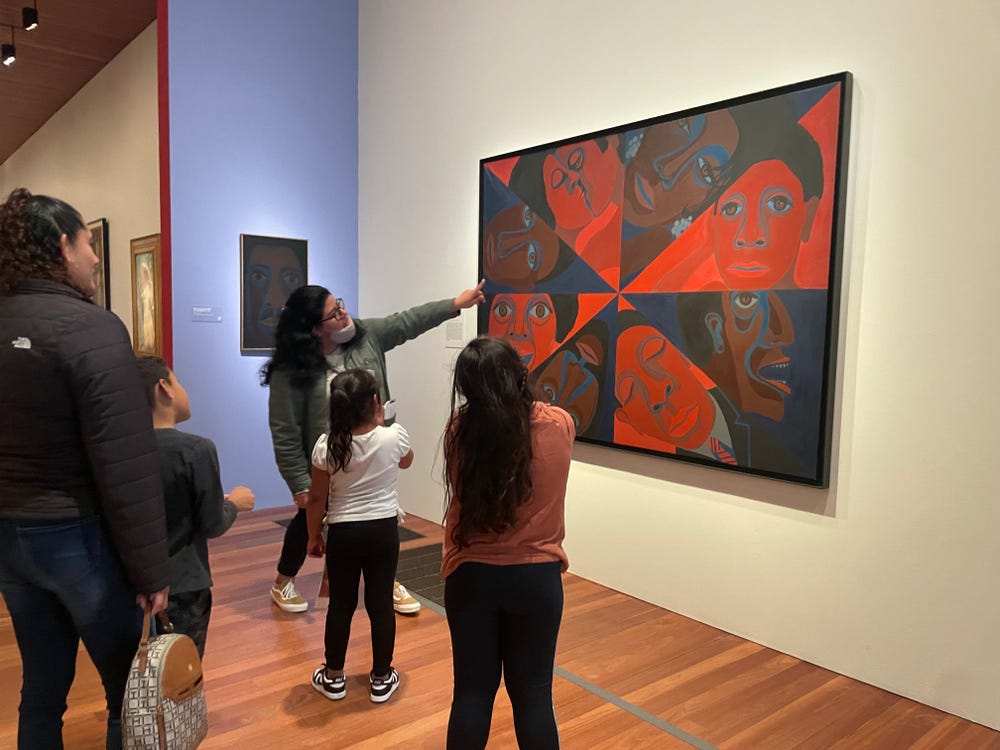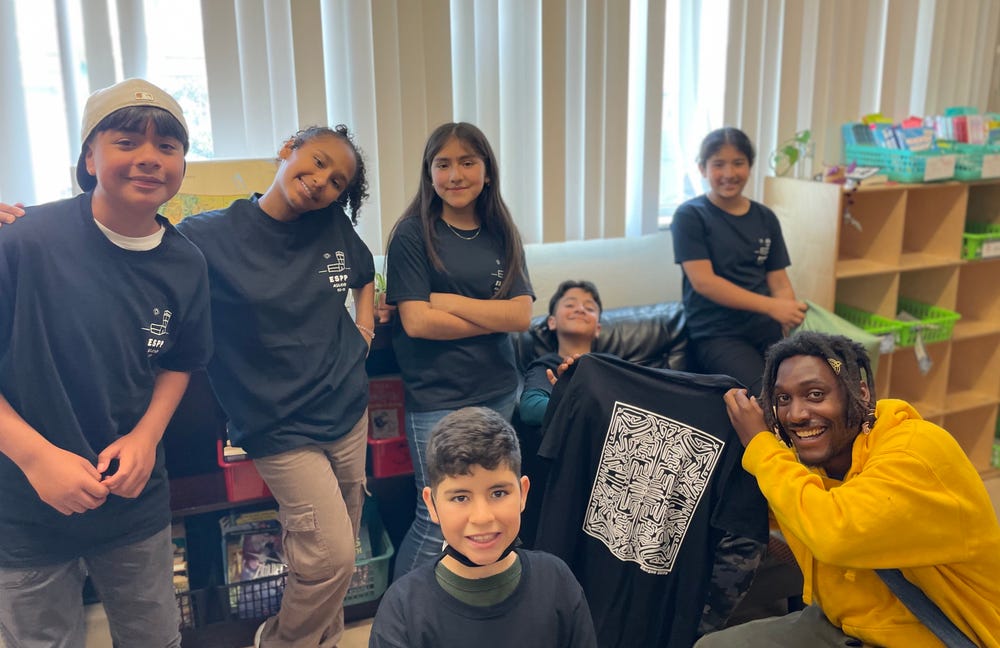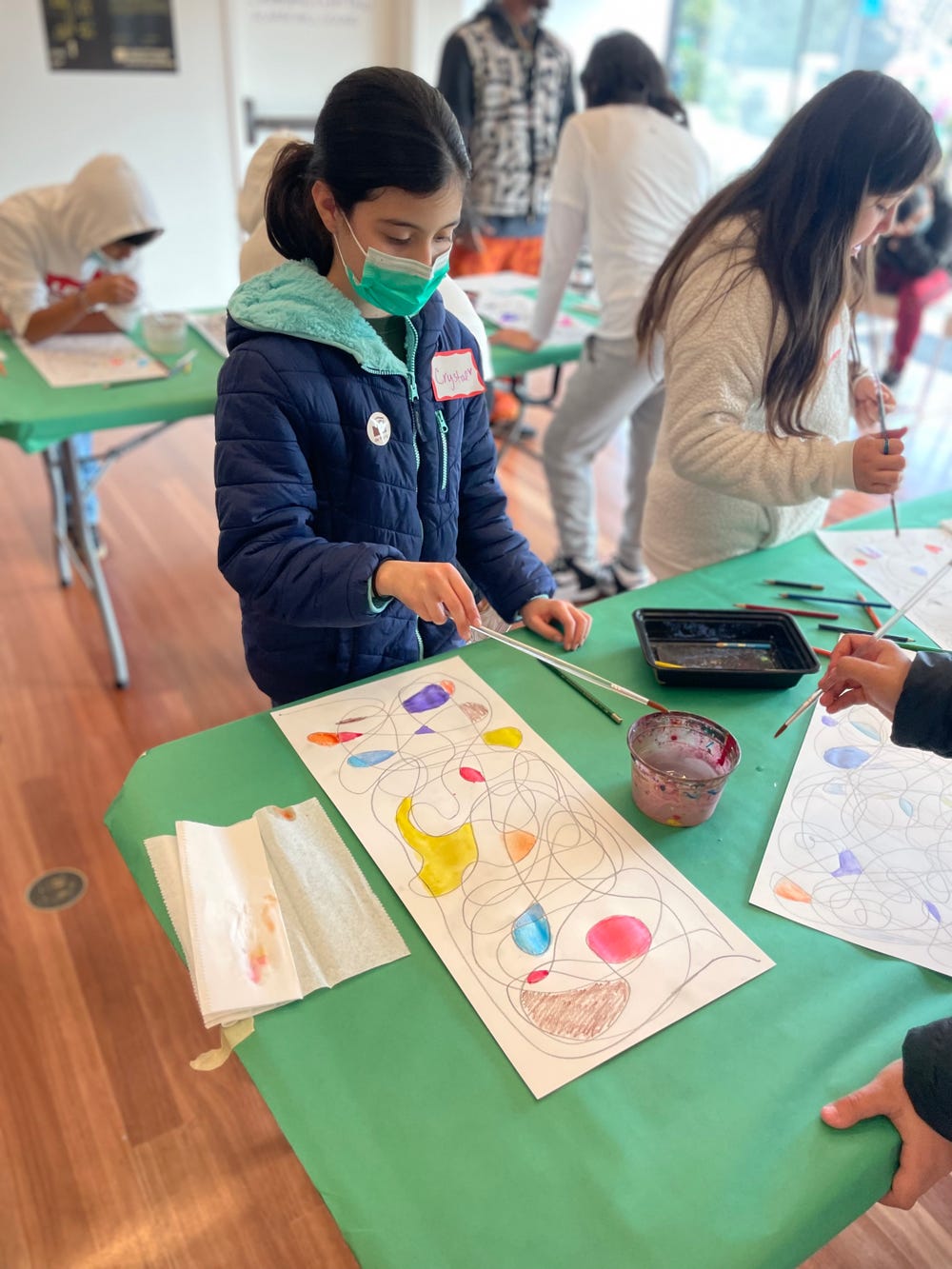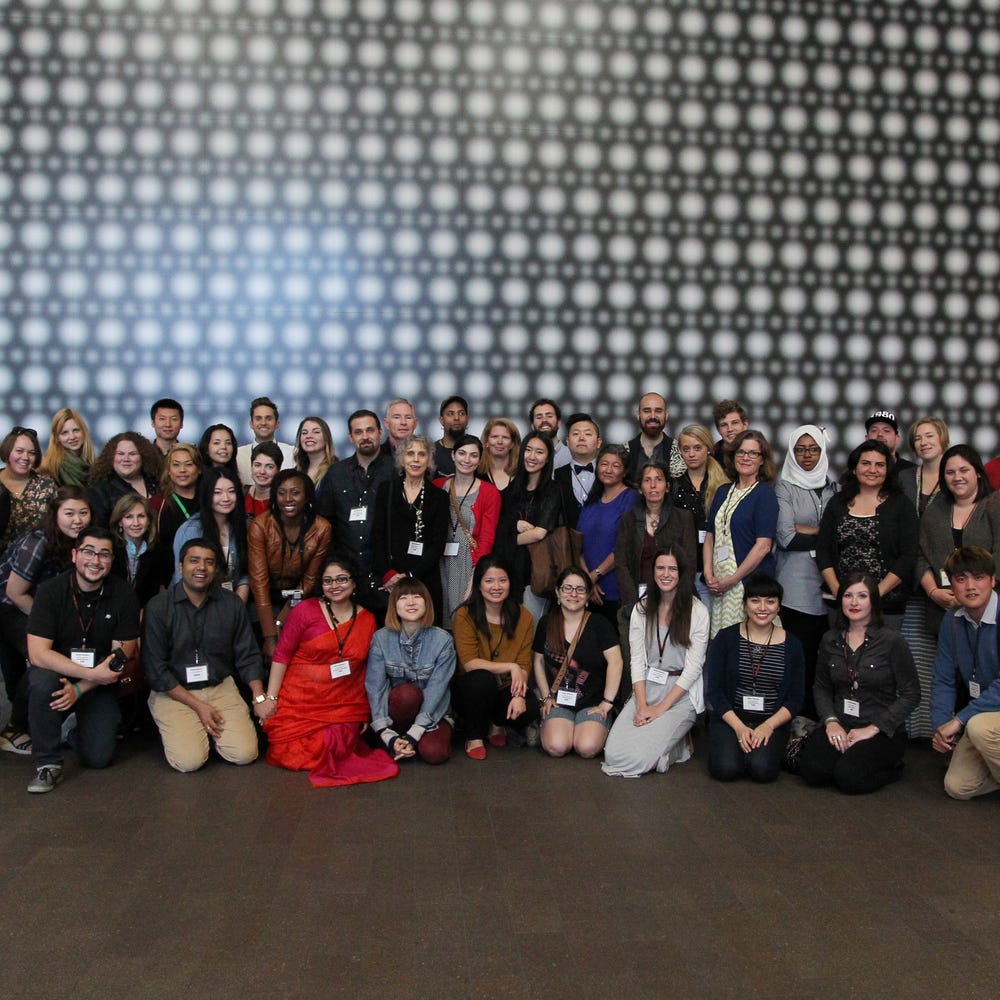Equity School Partnership Project: Making Change One Class at a Time
By Adrianna Alvarez, manager of school and family partnerships
October 12, 2023
The Equity School Partnership Project (ESPP), launched in 2021, bridges the Fine Arts Museums of San Francisco with K–5 classrooms through arts integration. The project was collaboratively conceived with public school leaders to better address the evolving needs of predominantly BIPOC students and teachers in Bay Area schools. ESPP pairs museum staff and community-based artists with elementary school teachers to co-develop customized arts curriculum and programming that is student-centric, focused on social-emotional learning, and culturally responsive.
In the spring of 2021, four educators from the San Francisco Unified School District and one educator from Oakland Unified School District developed the structure of ESPP in collaboration with museum education staff. Responding to the 2019 needs assessment of FAMSF’s existing guided program, Get Smart with Art, the group thought carefully about how the Museums could reach students and educators who did not find relevance in our existing programming. Through our conversations, we established that ESPP would include multiple classroom visits and one free on-site museum visit at the de Young. ESPP also provides support for in-classroom instruction, art supplies, and transportation for students and families who do not typically visit the de Young or Legion of Honor, as well as access to museum classrooms.
César Chávez Elementary: planning + piloting
The initial pilot of ESPP began in the spring of 2022 at César Chávez Elementary in the San Francisco Mission District. Liliana Santos, former educator and after-school program director, supported the partnership and assisted in designing ESPP. With a focus on building relevant and student-centered curriculum, museum teaching artists collaborated with second grade teacher, Ms. Eliza, and fifth grade teacher, Ms. Crystal, to build six customized lessons, including a museum field trip. Through the curriculum, students bridged connections between Mission District murals and the Museums’ Mesoamerican murals from Teotihuacan. Students answered guided inquiry questions, such as:
- What symbols do you see in your neighborhood murals?
- What are some ideas that are important to you in your life?
- What is important to your community?
- What could you draw to symbolize your idea?
César Chávez Elementary: museum visit + tour of Faith Ringgold: American People
The partnership with Ms. Eliza’s second grade after-school class continued through the 2022–2023 school year and expanded to a bilingual second grade class during the school day. With second grade classroom teacher Maestro Alex, who teaches in both English and Spanish, students explored the art of Faith Ringgold and the process of storytelling across various art mediums. The collaboration culminated in students’ creating clay vessels and a book of paintings and drawings in both languages.
Students and families also visited the de Young and received tours of the Faith Ringgold exhibition in both English and Spanish. The following are questions and activities from the tours.
Framing: In this painting, Ringgold used the primary colors blue and red to show the eight emotions of Black America in 1969 — from excitement to introspection to despair.
Making connections:
What do we see in this painting? . . . ¿Qué está pasando en esta imagen?
Have you ever felt one of these emotions before? . . . ¿Has sentido alguna de estas emociones alguna vez?
Interaction physical embodiment activity — replicating expressions:
What types of expressions do we make when we are happy? . . . We smile. Now we are all going to smile.
¿Qué tipo de expresiones hacemos cuando estamos felices? . . . Sonreímos. Ahora todos vamos a sonreír.
Our final visit with students from César Chávez included a walking field trip through Balmy Alley and giving students a copy of the book they wrote together. By creating an experience that supported bilingual educators, students, and families, the collaboration with César Chávez created a space to bridge art in community to art in the museum.
Ascend Elementary: working with an Oakland artist
In February of 2023, the Museums began working with two fifth grade classrooms at Ascend Elementary in East Oakland. This time we changed our program model by working with an artist practicing directly in Oakland, Terrion Smith. Also known as “Shogun Shido,'' Smith is well connected to various Oakland communities and creative spaces. His art practice honors ancestry, which aligned with Jasmine Alexander’s project with her fifth-grade class around family and identity. Through this collaboration, students learned about street art, fashion, and music. Students also used various mediums to explore line, color, pattern, and other art concepts.
In addition, the ESPP team constructed a six week integrative arts–based curriculum through which students explored our Mesoamerican and African collections, made connections to their own ancestries, and created ancestral ornaments to honor important family and community members who had passed. Students also received a T-shirt with a design by Smith for their participation in the program.
The ESPP 2022–2023 pilot program with Ascend and César Chávez culminated in a display of student artwork at the Museum’s de Youngsters Day Out in March 2023.
Looking ahead
In the 2023–2024 school year, we will continue to develop relationships with schools and community partners to build a sense of safety and belonging with the Museums. We are partnering with eight Bay Area classrooms and local community organizations.
Moving forward, we are ensuring that there are multiple opportunities to be in direct partnership with school communities and organizations — both off-site and at the de Young. Our work with ESPP is rooted in reciprocity, multiple touch points of engagement, and learning from the strength of community organizations and cultural centers, while building connections to parents, educators, and Bay Area communities at large. We are nurturing relationships by listening to the interests and needs of school communities and organizations, and ultimately moving at the speed of trust. With the intentional design of working with local artists, investing in language accessibility, developing a learning arch, and creating a holistic approach to the ways in which youth, schools, and families work, we hope to engage more Bay Area communities with the Museums in years to come.
Photographs by Adrianna Alvarez, manager of school and family partnerships.
